No products in the cart.
Mold Resources
What is Pink Mold?
Pink mold in a home could be a species such as Aureobasidium pullulans. It could also be bacteria, such as Serratia Marcescens, the most common culprit. These species require lots of moisture to survive and thrive, so they pop up in areas with prolonged high humidity and water sources.
How Dangerous is Pink Mold?
Mold and bacteria colonies release microscopic particles into the air, including fragments, spores, endotoxins, and exotoxins. Some species of mold also release microscopic toxins called mycotoxins when threatened. The longer the growth goes on, the more particles it will release. This lowers the indoor air quality and can cause unwanted exposure as those particles enter the body through inhalation.
Exposure triggers a multi-systemic immune response, so symptoms can span the entire body. Some common symptoms include headaches, coughing, runny nose, watery eyes, rashes, mood swings, digestive issues, brain fog, chronic fatigue, and more. Everyone responds differently to mold exposure for a variety of factors. While one person may have no symptoms, another may develop over a dozen. That’s why all microbial growth, including pink mold (or bacteria), should be handled quickly and correctly.
What Causes Pink Mold?
Pink mold or bacteria require lots of moisture to survive. That means they pop up in areas with prolonged high humidity, condensation, standing water, and damp surfaces.
Popular locations for pink mold include:
Shower curtains
Shower walls
Bathtubs
Grout and caulk
Humidifiers
Dishwashers
Toilets
Showerheads
Sink faucets
How to Get Rid of Pink Mold
All mold, regardless of color, should be treated the same way.
The source that led to the issue should be fixed.
Correct engineering, PPE, and remediation protocols should be utilized to reduce exposure and the risk of cross-contamination in unaffected areas.
The microbial growth should be removed, including roots, dead particles, fragments, etc.
All contamination, including mycotoxins and bacteria, should be eliminated.
The room’s interior should be cleaned to eliminate any particles released by the microbial growth.
How to Prevent Pink Mold
Focus on creating airflow in highly humid rooms, like kitchens and bathrooms, so that the humidity level remains between 35-50%
Address leaks and structural issues that allow for moisture intrusion immediately
Routinely clean all appliances and machines like humidifiers and dishwashers
Make sure machines like dehumidifiers, humidifiers, dishwashers, etc., are dried thoroughly when not in use
Remove wet clothes from the laundry immediately and leave the door open so that the interior can dry
Use botanical cleaning products with surfactants, a HEPA vacuum cleaner, and microfiber towels to clean
Clean all machine-washable items with a laundry additive like EC3 to remove microscopic particles
Separate the shower curtain and liner after use
Squeegee the shower after use
Clean the home regularly
Hang up bath mats, towels, wash rags, loofahs, and any other wet items to dry after use
Clean and maintain toothbrushes and their holders
Clean the showerhead once a month
Invest in air purification
Upgrade to the highest-rated MERV filter the HVAC unit can handle and change them on time
Showing all 5 results
-
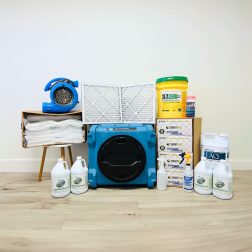
HomeCleanse DIY
All the equipment and materials we use to remediate your home, plus consultation and support...
-
$5,995.00 – $9,995.00 SHOP NOW -
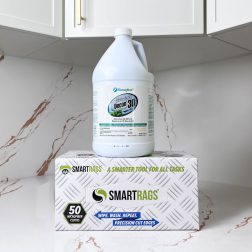
Mold & Bacteria Contents Cleaning
Remove harmful pollutants that accumulate in the dust of your home. (Options available for renters...
-
$99.00 – $349.00 SHOP NOW -
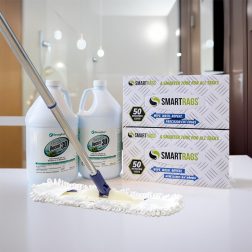
HomeCleanse Cleaning
Take your cleaning to the next level buying all the tools we use to keep...
-
$299.00 – $549.00 SHOP NOW -
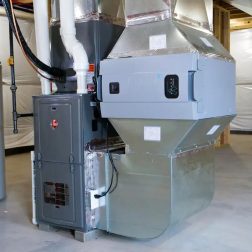
Intellipure SuperV Whole House Air Purifier
Turn your HVAC into a filtration system, removing 99% of ultrafine particles including airborne mold,...
-
$2,000.00 – $2,995.00 SHOP NOW -
Sale
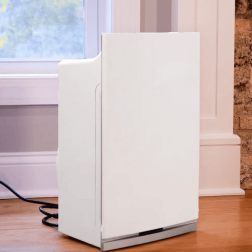
Intellipure Compact Air Purifier
Small in size, but delivers powerful results, reducing airborne microorganisms like mold, viruses, and bacteria.
-
Original price was: $549.00.$199.00Current price is: $199.00. SHOP NOW
Still Have Questions?
A member of our team is here to help! Click on “Get Started ➤” below to book a consultation with a member of the HOMECLEANSE team. We have a few quick questions that will help us put together a roadmap to solve or prevent all of your mold problems.
Two minutes of your time could lead to better health for you and your family.
